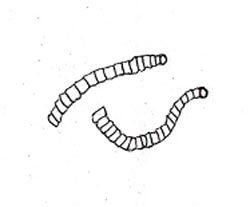Livestock has a major role in satisfying our nutritional requirements through animal products and thereby supporting economic status. Day by day, the population is increasing and therefore, the nutritional requirement is also increasing, to fulfill the nutritional requirements, we have to improve our livestock population and their health. As livestock health is concerned, parasitic infestation is one of the serious health hazard to the livestock population and also responsible for major economic losses in the livestock sector.
In parasitic infestation, the ectoparasites are easily visible on an animal’s body and get treated but as endoparasites are not visible, and so they are ignored very often. To overcome such problems, this article gives a brief idea about Endoparasites their impact on animals’ health and how we can control and prevent them. Before that we should know about “Parasite”.
Parasite
A parasite is an organism that lives in or on the body of other animals (host) to get nutrients for their life process.
Parasites are of two types:
- Endoparasites or internal parasites are the types of parasites that live in an organ or a tissue of a host for their life processes. Endoparasites include Roundworms (Nematodes), tapeworms (Cestodes), flukes (trematodes), and Protozoa.
- Ectoparasites or external parasites are the types of parasites that live on an animal’s body. Ectoparasites include ticks, lice, flies and mites.




Impact of Endoparasite on animals health and production
- Parasites feed on animals’ blood and get nutrition which causes loos of blood and results in anemia and in severe cases, animals may die.
- Parasitic infestation can cause a decrease in appetite or loss of appetite which results in loss of body condition and animals become lethargic.
- Parasites also responsible for deficiency of nutrition or malnutrition in animals that hamper normal growth as well as different functions of the body
- Parasites can act as a vector and spread disease from one animal to other animals.
- Parasitic infestation increases the stress in animals that causes a decrease in immunity of animals which makes them susceptible to various infectious diseases resulting in loss of optimum production from affected animals and also increases the medical cost.
Briefly, endoparasites has a major impact on animals’ health which leads to a loss in body condition, decreased reproductive efficiency, decreased milk production, apparently result in economic loss.
Life cycle and transmission
Most endoparasites enter the host by ingestion, grow to maturity in the gut, and lay eggs that pass out with manure to be ingested with feed or water by a susceptible animal to start the cycle again. Most internal parasites are host-specific; they live in just one type of animal and can’t complete their life cycle in the wrong host.(1)
They are mainly transmitted by the fecal-oral route typically via food and water mostly contaminated by faeces from infected animals.
Signs
Common signs of endoparasitic infestation are given below
- Weight loss
- Anorexia/loss of appetite
- Rough hair coat
- Diarrhoea or constipation
- Anemia (pale mucous membranes)
- Pot bellied stomach
- Bottle jaw
- Weakness
Animals may show one or more signs, depending on the burden of internal parasites.

Diagnosis
Diagnosis can be done based on clinical signs, presence of worms or the eggs in faeces, history of grazing, stagnant water source nearby, and post-mortem findings.
Treatment
Treatment of worm infestation is accomplished by giving broad spectrum antihelmintic drugs as drenching solutions, tablets, or Injection.
As per Indian climatic conditions, the grazing animals must be deworm at least twice in year at the onset (May end) and offset of monsoon (September end).(2)
Deworming of animals should be done by consulting to the Veterinarian only.
Control & Preventive Measures
- Deworming of animals at regular intervals should be done.
- Treated animals should be kept separated from healthy animals, as well as young animals should be kept separate from adult animals
- Try to graze animals on new pastures in the same season
- Avoided overstocking of animal.
- If animals are housed in closed sheds then proper disposing of faecal or other waste matter should be done to prevent animals share worms with other animals.
- Avoid grazing of animals on pasture where the grass is short.
- Always try to maintain cleanliness in animals shed.

By implementing proper control and preventive measure along with good nutrition and management help animals to fight against endoparasitic infestation which results in an improvement in animals’ health, population as well as production.
References
- Thomas, H., 2009. The Cattle Health Handbook. North Adams: Storey Publishing.
- Kumar, N., Rao, T., Varghese, A. and Rathor, V., 2012. Internal parasite management in grazing livestock. Journal of Parasitic Diseases, 37(2), pp.151-157
| The content of the articles are accurate and true to the best of the author’s knowledge. It is not meant to substitute for diagnosis, prognosis, treatment, prescription, or formal and individualized advice from a veterinary medical professional. Animals exhibiting signs and symptoms of distress should be seen by a veterinarian immediately. |






Be the first to comment